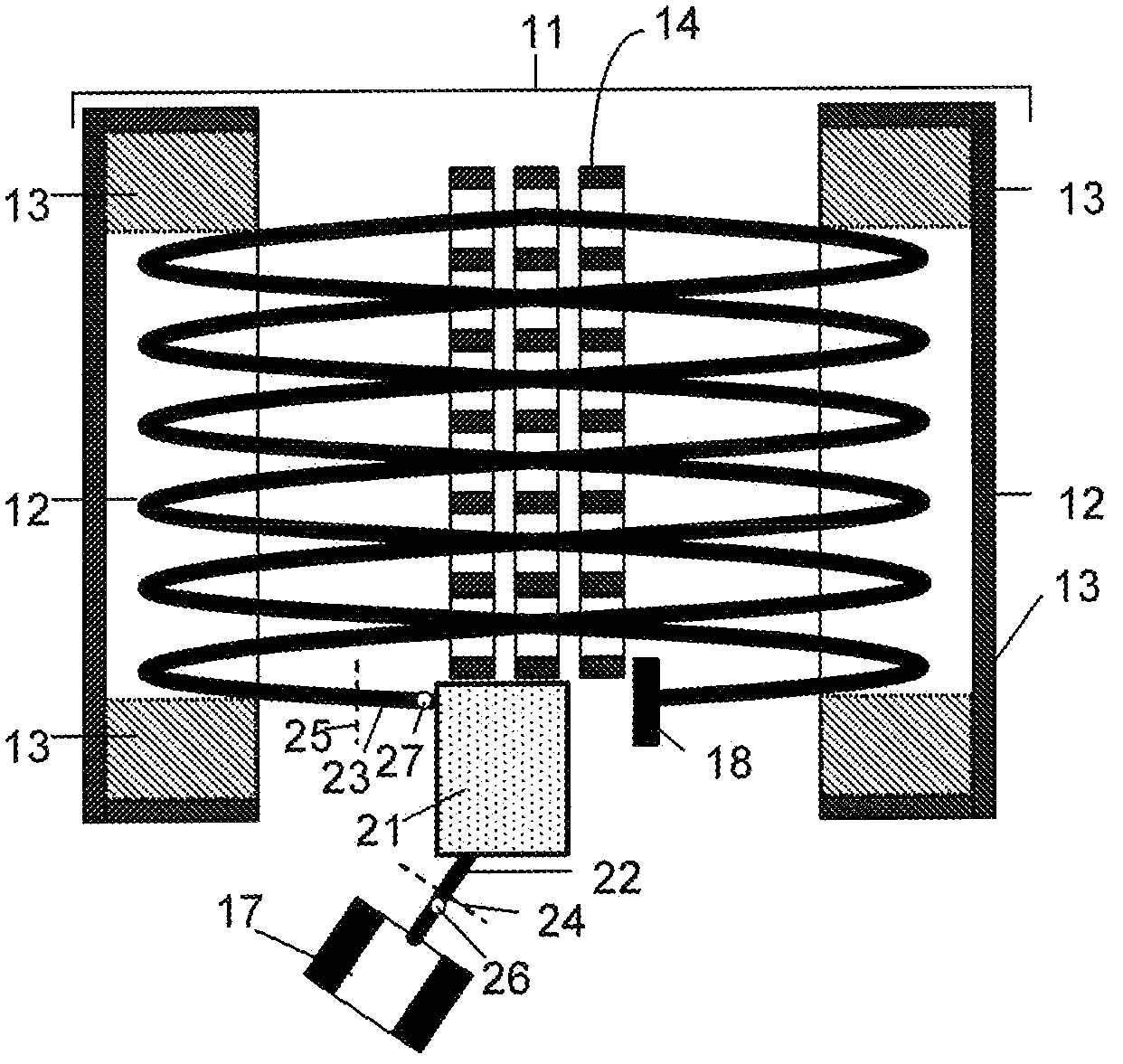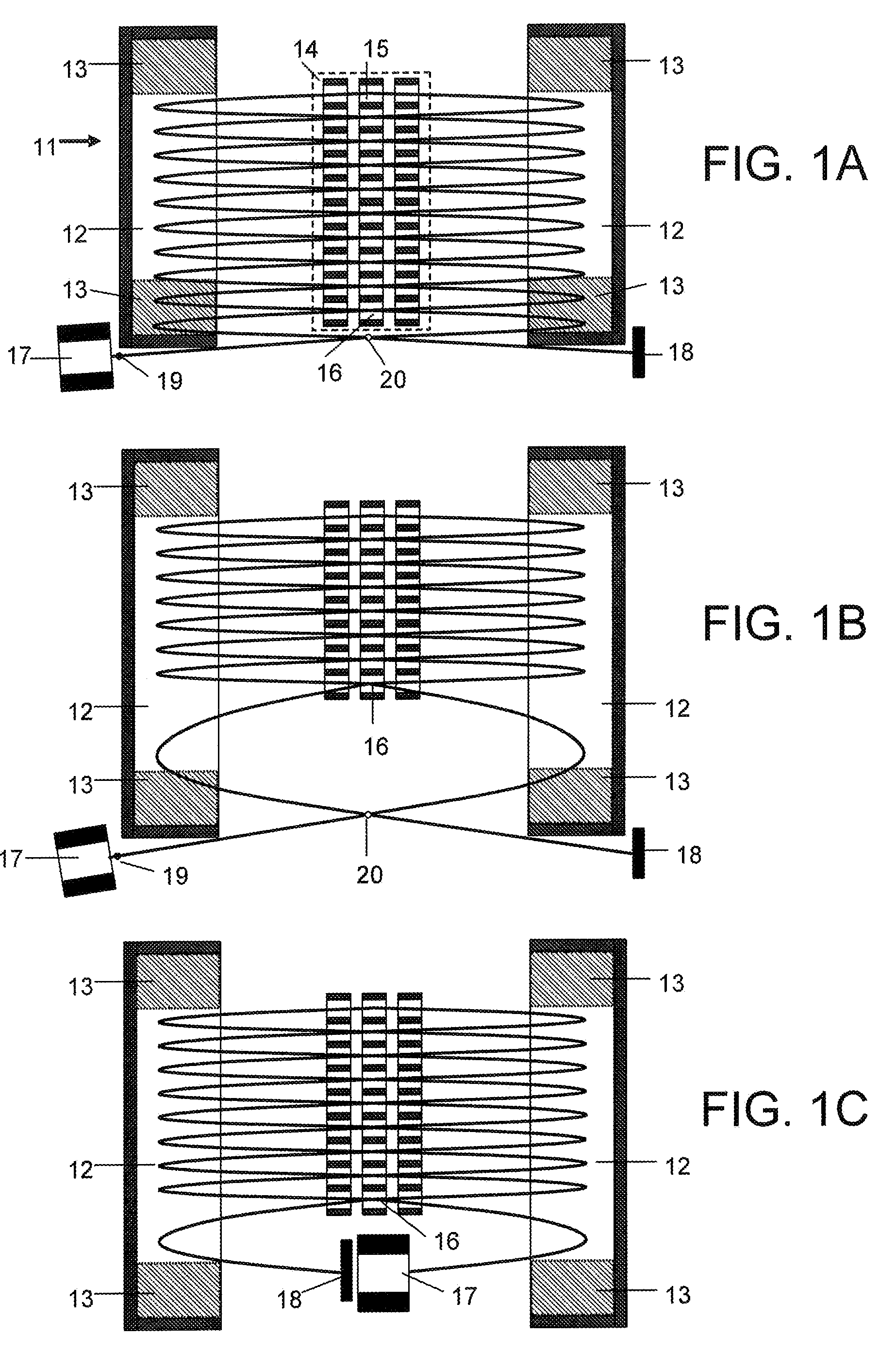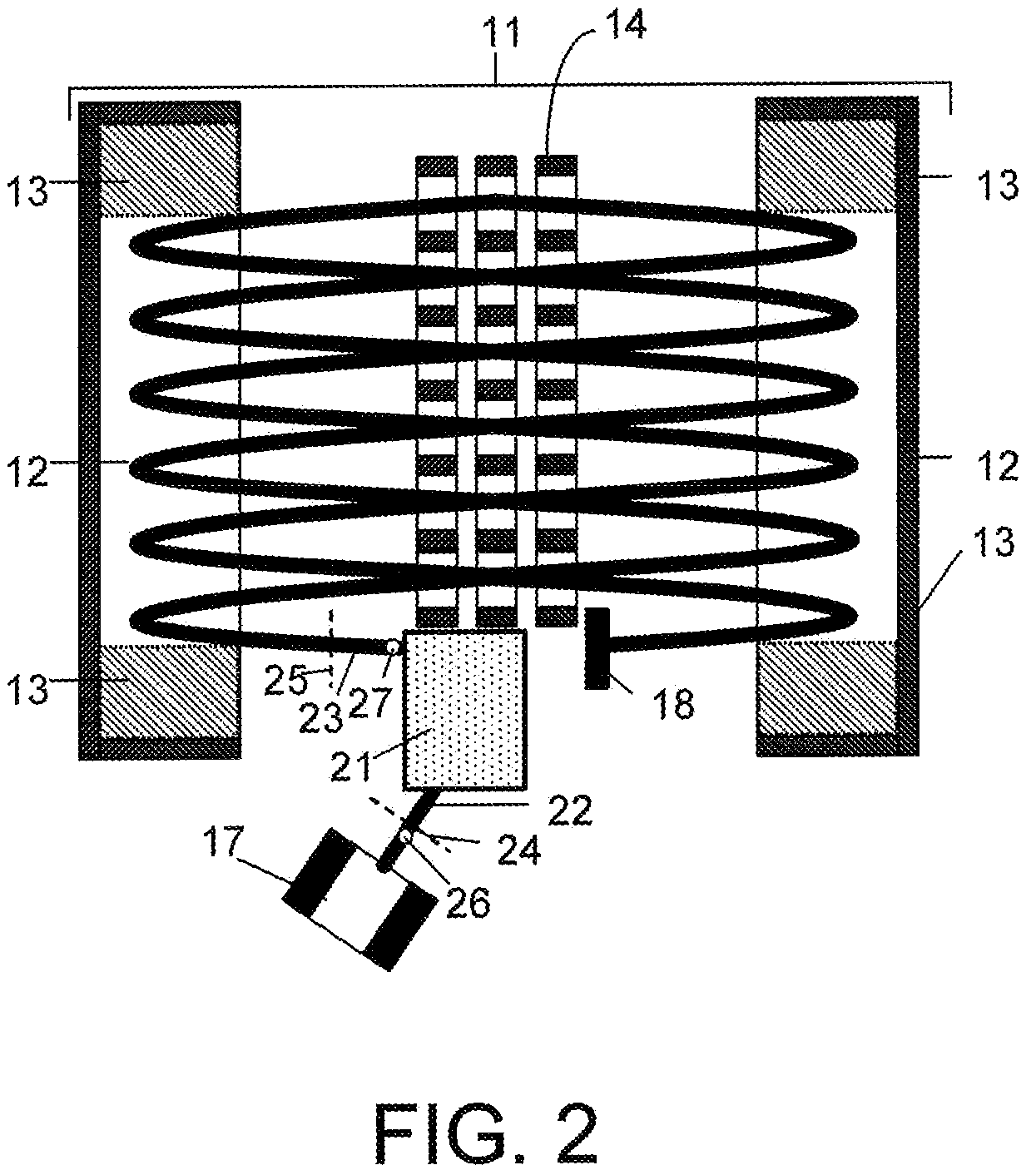Multi-reflecting time-of-flight mass spectrometer with isochronous curved ion interface
a time-of-flight, multi-reflecting technology, applied in the field of mass spectroscopic analysis, can solve the problems of limiting the maximum mass range, limiting the acceptable mass range, and most of the multi-reflecting and multi-turn instruments of the prior art not providing the full mass rang
- Summary
- Abstract
- Description
- Claims
- Application Information
AI Technical Summary
Benefits of technology
Problems solved by technology
Method used
Image
Examples
embodiment 111
[0162]Referring to FIG. 11, a preferred embodiment 111 of the third aspect of the invention comprises a rectilinear ion trap 112 with delayed extraction, a C-shaped cylindrical interface 113 and a planar MR TOF analyzer 116. It also may comprise an optional second isochronous interface 114 and an external ion detector (receiver) 115. The long side of linear trap 112 is oriented across the plane of jig-saw ion trajectory in the MR TOF MS (here perpendicular to the drawing plane). An extracting pulse is applied after some predetermined delay (in microsecond time scale) after switching off the RF signal on the trap. Non-correlated velocity spread is reduced. An excessive energy is filtered out in the energy analyzer. Ion packets are ejected along a slightly tilted trajectory 117 to be aligned with the drift angle of the planar MR TOF analyzer with periodic lenses. In the particular embodiment, the ions are reflected in the last lens. This reverses the drift motion and doubles the fligh...
embodiment 121
[0165]Referring to FIG. 12A, in one particular embodiment 121, an isochronous cylindrical interface 122 with 180 degree deflection is suggested to transfer ions between two parallel ion mirrors—one mirror 123 sitting on the top of another 124. The arrangement opens ion access in and out of the planar ion mirror far from fringing fields in the mirror. An exemplar ion source 126 is shown opposite of the lower mirror 124.
[0166]FIG. 12B shows a three-dimensional view of the same embodiment 121, also showing an ion detector 127 at the back side of the MR TOF analyzer.
embodiment 131
[0167]Referring to FIG. 13, in another particular embodiment 131, a curved and spatially isochronous interface 132 is employed to transfer ions between at least two parallel MR TOF analyzers 133 and 134, aligned into a multi-level assembly. Isochronous curved interfaces are used to pass ions between the floors.
[0168]Both above embodiments maximize the ion path per vacuum chamber size. Multiple parallel mirrors could be conveniently and inexpensively made by machining multiple windows within the same electrodes.
[0169]An isochronous interface can be also employed to reverse the direction of ion drift motion (not shown). It could be used to transfer ions between different analyzers while being pulsed and static operated (not shown) or between multiple stages of tandem mass spectrometric analysis (described below). The curved sector is preferably made cylindrical for simpler manufacturing and alignment.
[0170]It is of significance that systems based on electrostatic sectors are usually e...
PUM
 Login to View More
Login to View More Abstract
Description
Claims
Application Information
 Login to View More
Login to View More - R&D
- Intellectual Property
- Life Sciences
- Materials
- Tech Scout
- Unparalleled Data Quality
- Higher Quality Content
- 60% Fewer Hallucinations
Browse by: Latest US Patents, China's latest patents, Technical Efficacy Thesaurus, Application Domain, Technology Topic, Popular Technical Reports.
© 2025 PatSnap. All rights reserved.Legal|Privacy policy|Modern Slavery Act Transparency Statement|Sitemap|About US| Contact US: help@patsnap.com



